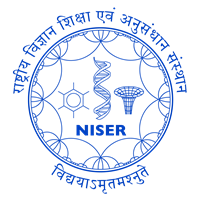

Assistant Professor
tridibmahataniser.ac.in
-
Postdoc. Tel Aviv University, Tel Aviv, Israel (2019-2025)
Ph.D. Biochemistry. Calcutta University (CSIR-IICB), Kolkata, India (2012-2018)
M.Sc. Applied Microbiology. Banaras Hindu University, Varanasi, India (2009-2011)
B.Sc. Microbiology. University of Burdwan, Burdwan, India (2006-2009)
Molecular Biology, Microbiology, Biochemistry, Bacterial and Phage Genetics
Our lab explores the fascinating molecular conflict between bacteria and bacteriophages - a never-ending evolutionary arms race that has been ongoing for billions of years. Our aim is to uncover fundamental mechanism of microbial warfare - how phages take over their bacterial hosts and how bacteria defend themselves against phage attack. Using a combination of microbial genetics, molecular biology, genomics, and biochemistry, we investigate these interactions and translate our discoveries into innovative tools for biotechnology and medicine.
Our research focuses on three major themes:
we are focusing on exploring a recently discovered mobile genomic island (GMT island) - a hotspot of bacterial immune systems - along with other defense islands and environmental microbiome to discover new anti-phage defense systems. Understanding how these systems function not only deepens our knowledge of bacterial immunity but may also reveal evolutionary parallels to human immune pathways.
2. Unravelling phage counter-defense strategy
Phages have evolved remarkable strategies to overcome bacterial defenses, including phage encoded direct inhibitors that block bacterial immune systems. Our goal is to understand these phage-encoded counter defense mechanisms, uncover how phages neutralize host defenses, and harness these molecular tools for biotechnological and therapeutic applications.
3. Exploring phage-encoded antimicrobials
Phages encode a vast repertoire of proteins that target diverse bacterial metabolic processes. Our goal is to identify phage-encoded proteins with antimicrobial activity, determine their molecular targets, elucidate their mechanisms of action, and explore their potential to combat multidrug-resistant bacteria.
By delving into phage–bacteria interactions, our research aims to uncover proteins with unique functions that can be harnessed for biotechnological and therapeutic applications.